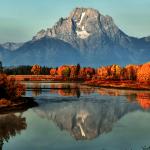The Amarnath Yatra: A Pilgrimage of Faith and Adventure
The Amarnath Yatra stands as a revered pilgrimage in India, drawing countless devotees and adventure seekers to the hallowed Amarnath Cave situated in - Tripclap

The Amarnath Yatra stands as a revered pilgrimage in India, drawing countless devotees and adventure seekers to the hallowed Amarnath Cave situated in the mystical land of Jammu and Kashmir. This annual pilgrimage holds immense spiritual significance for Hindus, as it is believed to lead to the abode of Lord Shiva in the form of an ice lingam.
The journey to the Amarnath Cave, located at an altitude of about 3,880 meters (12,700 feet), is a blend of faith and adventure. The yatra typically takes place during the months of July and August, coinciding with the Hindu month of Shravana, when the ice lingam attains its fullest form.
Pilgrims embark on a challenging trek that traverses rugged terrains, icy paths, and breathtaking landscapes. The path to the cave is flanked by snow-capped peaks and pristine valleys, creating an awe-inspiring ambiance that enhances the spiritual experience.
The Amarnath Yatra isn't merely a physical journey but a transformative quest that tests one's endurance, determination, and devotion.
Security and safety are paramount for the Amarnath Yatra. The government and local authorities work diligently to ensure the well-being of pilgrims, with arrangements for medical assistance, accommodation, and security personnel along the route. The Yatra's popularity has led to the development of infrastructure, including camps and facilities, making the journey more accessible to a wider range of pilgrims.
Security and safety are paramount for the Amarnath Yatra. The government and local authorities work diligently to ensure the well-being of pilgrims, with arrangements for medical assistance, accommodation, and security personnel along the route. The Yatra's popularity has led to the development of infrastructure, including camps and facilities, making the journey more accessible to a wider range of pilgrims.
Beyond the physical challenges, the Amarnath Yatra is a deeply spiritual voyage. Devotees believe that by undertaking this journey, they receive Lord Shiva's blessings and are cleansed of their sins. The sight of the naturally formed ice lingam is said to be a mesmerizing moment, evoking a sense of divine presence and overwhelming devotion.
However, the Amarnath Yatra also reflects the harmony and unity that transcend religious boundaries. It's a testament to the region's rich cultural diversity, as local Muslim communities often extend their hospitality to the pilgrims, showcasing the spirit of communal harmony.
In conclusion, the Amarnath Yatra is a convergence of faith, adventure, and spirituality. It encapsulates the devotion of countless pilgrims while celebrating the natural beauty of the region. This annual pilgrimage serves as a reminder of the diverse tapestry of India's cultural and religious heritage, fostering a sense of unity and shared humanity among all who embark on this remarkable journey.
Per Person
25,500
*EXCLUDING APPLICABLE TAXES 4.0 Ratings
( 46 Reviews )
( 46 Reviews )
Per Person
24,999
*EXCLUDING APPLICABLE TAXES 5.0 Ratings
( 65 Reviews )
( 65 Reviews )
Registration of Amarnath Yatra
 View Gallery - 4
View Gallery - 4 The registration procedure for the Amarnath Yatra involves several steps to ensure a smooth and organized pilgrimage experience. While the exact details may vary from year to year, the following outlines a general process that pilgrims typically follow:
Visit the Official Website: Begin by visiting the official website of the Shri Amarnathji Shrine Board https://jksasb.nic.in/, the governing body responsible for managing the Amarnath Yatra. The website will provide the most up-to-date information about registration dates, guidelines, and other essential details.
Create an Account: Pilgrims usually need to create an account on the Yatra's official website. This involves providing personal details such as name, age, gender, contact information, and a valid identification document (such as Aadhaar card or passport).
Select Route and Date: Choose your preferred route for the Yatra—either the Pahalgam route or the Baltal route. Additionally, select the desired Yatra dates from the available options. It's advisable to check the weather and the conditions of the chosen route before finalizing.
Provide Medical Information: Due to the challenging terrain, health conditions are crucial for the pilgrimage. Pilgrims are often required to provide medical information, including any pre-existing health issues, allergies, and required medications. This information helps authorities ensure your safety during the Yatra.
Upload Photograph: You will likely need to upload a recent passport-sized photograph as part of the registration process. This photograph will be used for identification purposes during the Yatra.
Pay Registration Fee: Most years, there is a nominal registration fee to cover administrative costs, facilities, and services provided during the Yatra. Payment options and details will be provided on the website.
Receive Confirmation: After completing the registration process and making the payment, you will receive a confirmation with a unique Yatra registration number. This number is important and will be used for further communication and during the Yatra.
Check Updates: Stay updated by regularly checking the official website and your registered email for any updates, instructions, or changes related to the Yatra.
It's important to note that the registration process and requirements can change each year, so it's recommended to refer to the official website for the most accurate and current information. The registration process is designed to manage the flow of pilgrims, ensure their safety, and provide them with the necessary facilities for a successful Amarnath Yatra.
Places to visit in Jammu and Kashmir

Amarnath

Anantnag

Gulmarg

Khilanmarg

Pahalgam

Patnitop

Pulwama

Srinagar

Kargil

Kashmir

Shankaracharya Temple

The Hazratbal Mosque

Doodhpathri

Sonmarg

Kokernag

Yusmarg

Gurez Valley
Total
19,999
*EXCLUDING APPLICABLE TAXES 3.7 Ratings
( 5 Reviews )
( 5 Reviews )
Per Person
22,500
*EXCLUDING APPLICABLE TAXES 5.0 Ratings
( 21 Reviews )
( 21 Reviews )
Per Person
29,999
*EXCLUDING APPLICABLE TAXES 4.8 Ratings
( 95 Reviews )
( 95 Reviews )
Per Person
18,400
*EXCLUDING APPLICABLE TAXES 5.0 Ratings
( 21 Reviews )
( 21 Reviews )
Per Person
19,950
*EXCLUDING APPLICABLE TAXES 4.9 Ratings
( 185 Reviews )
( 185 Reviews )
Per Person
28,999
*EXCLUDING APPLICABLE TAXES 4.8 Ratings
( 77 Reviews )
( 77 Reviews )
Per Person
19,900
*EXCLUDING APPLICABLE TAXES 4.9 Ratings
( 185 Reviews )
( 185 Reviews )
Per Person
16,000
*EXCLUDING APPLICABLE TAXES 3.7 Ratings
( 5 Reviews )
( 5 Reviews )
Per Person
20,340
*EXCLUDING APPLICABLE TAXES 5.0 Ratings
( 108 Reviews )
( 108 Reviews )
Per Person
28,500
*EXCLUDING APPLICABLE TAXES 5.0 Ratings
( 21 Reviews )
( 21 Reviews )
Significance of Amarnath Yatra
 View Gallery - 4
View Gallery - 4 The Amarnath Yatra holds profound significance in Hinduism and is revered as one of the most spiritually enriching pilgrimages in India. This annual journey to the Amarnath Cave, situated in the lofty Himalayas of Jammu and Kashmir, is rooted in mythology, spirituality, and devotion, and it carries multiple layers of importance:
Abode of Lord Shiva: The foremost significance of the Amarnath Yatra lies in the belief that the ice formation inside the cave represents the sacred manifestation of Lord Shiva's lingam, a symbol of his divine energy and power. Pilgrims undertake the arduous journey to seek the darshan (sight) of this natural ice lingam, considering it a rare privilege to witness Lord Shiva's presence.
Purification and Spiritual Cleansing: Devotees believe that embarking on the Amarnath Yatra cleanses them of their sins and helps them attain spiritual purification. The challenging trek is seen as a metaphor for the trials and tribulations of life, and overcoming these challenges signifies one's devotion and determination in their pursuit of spiritual growth.
Connection with Nature: The Yatra's breathtaking natural surroundings add to its significance. The route takes pilgrims through awe-inspiring landscapes, snow-clad mountains, lush valleys, and pristine lakes. This close interaction with nature is believed to enhance one's connection with the divine, fostering a sense of humility and appreciation for the wonders of creation.
Unity and Communal Harmony: The Amarnath Yatra exemplifies the spirit of unity and communal harmony. Despite its religious significance, people from various walks of life, irrespective of caste, creed, or religion, participate in the Yatra, demonstrating the unifying power of faith and spirituality.
Cultural Heritage: The Yatra is not only a religious practice but also a cultural heritage that reflects India's diversity and spiritual legacy. It reinforces the nation's commitment to preserving its ancient traditions and rituals, passing them down from one generation to the next.
Renewal of Faith: For many pilgrims, the Amarnath Yatra is an opportunity to reaffirm their faith and devotion to Lord Shiva. It allows them to disconnect from worldly distractions, reflect on their spiritual journey, and seek blessings for themselves and their loved ones.
Historical and Mythological Significance: The cave is mentioned in various ancient texts, including the Mahabharata and the Nilamata Purana. Its association with the legend of Lord Shiva narrated by Goddess Parvati adds to its mythological importance.
In essence, the Amarnath Yatra is more than just a physical journey; it's a spiritual odyssey that offers pilgrims a chance to connect with their inner selves, witness the divine in nature, and partake in a timeless tradition that carries immense spiritual, cultural, and communal significance.
Routs of Amarnath Yatra
 View Gallery - 4
View Gallery - 4 The Amarnath Yatra offers two main routes for pilgrims to embark on this spiritual journey, each presenting its own challenges and unique experiences:
Pahalgam Route:
The Pahalgam route is the traditional and longer route to the Amarnath Cave. Pilgrims start their journey from the base camp in Pahalgam, a picturesque town in the Anantnag district of Jammu and Kashmir. The route passes through stunning landscapes, meadows, and dense forests. Pilgrims trek through challenging terrains, including steep ascents and descents, as they make their way to the holy cave.
Major stops along the Pahalgam route include Chandanwari, Sheshnag, Panchtarni, and finally, the Amarnath Cave. These stops offer opportunities for rest, refreshment, and spiritual reflection. The Sheshnag Lake, surrounded by snow-capped mountains, is particularly breathtaking.
Baltal Route:
The Baltal route is a shorter but more strenuous option. Starting from the base camp at Baltal, near Sonamarg, pilgrims trek through rocky terrains and steep slopes. The route is challenging and demands good physical fitness. This route is preferred by those seeking a quicker journey to the Amarnath Cave.
The Baltal route also has stops like Domel, Barari, and Sangam, where pilgrims can take a break before continuing their ascent. This route provides breathtaking views of the mountains and offers a different perspective of the journey.
Both routes converge at Panchtarni, the last campsite before reaching the Amarnath Cave. From here, pilgrims trek a short distance to reach the sacred cave where the naturally formed ice lingam of Lord Shiva is worshipped.
While both routes have their own merits, the choice of route often depends on factors like individual physical capability, time constraints, and personal preferences. Regardless of the route chosen, the Amarnath Yatra remains a journey of faith, devotion, and self-discovery, offering pilgrims a unique opportunity to connect with nature and spirituality.
Places to visit in Pahalgam
Per Person
19,950
*EXCLUDING APPLICABLE TAXES 4.9 Ratings
( 185 Reviews )
( 185 Reviews )
Per Person
27,000
*EXCLUDING APPLICABLE TAXES 5.0 Ratings
( 28 Reviews )
( 28 Reviews )
Per Person
19,900
*EXCLUDING APPLICABLE TAXES 4.9 Ratings
( 185 Reviews )
( 185 Reviews )
Per Person
11,800
*EXCLUDING APPLICABLE TAXES 4.1 Ratings
( 56 Reviews )
( 56 Reviews )
Per Person
25,000
*EXCLUDING APPLICABLE TAXES 5.0 Ratings
( 108 Reviews )
( 108 Reviews )
Per Person
25,365
*EXCLUDING APPLICABLE TAXES 5.0 Ratings
( 108 Reviews )
( 108 Reviews )
Per Person
21,121
*EXCLUDING APPLICABLE TAXES 5.0 Ratings
( 108 Reviews )
( 108 Reviews )
Per Person
23,000
*EXCLUDING APPLICABLE TAXES 5.0 Ratings
( 108 Reviews )
( 108 Reviews )
Per Person
22,500
*EXCLUDING APPLICABLE TAXES 5.0 Ratings
( 28 Reviews )
( 28 Reviews )
Per Person
14,758
*EXCLUDING APPLICABLE TAXES 5.0 Ratings
( 108 Reviews )
( 108 Reviews )
Frequently Asked Questions (FAQs) About the Amarnath Yatra
1. What is the Amarnath Yatra?
The Amarnath Yatra is an annual pilgrimage to the Amarnath Cave in Jammu and Kashmir, India, where a naturally formed ice lingam is believed to symbolize Lord Shiva. Pilgrims undertake this journey for spiritual significance and to seek blessings from the divine.
2. When does the Amarnath Yatra take place?
The Yatra usually takes place during the months of July and August, coinciding with the Hindu month of Shravana. The exact dates may vary each year based on the lunar calendar.
3. What are the main routes for the Yatra?
There are two main routes: the Pahalgam route and the Baltal route. The Pahalgam route is longer and more traditional, while the Baltal route is shorter but more challenging.
4. Do I need to register for the Amarnath Yatra?
Yes, registration is mandatory for the Amarnath Yatra. Pilgrims need to register through the official website of the Shri Amarnathji Shrine Board to obtain a Yatra permit.
5. What are the registration requirements?
Registration typically involves providing personal details, selecting the route and date, uploading a photograph, and paying a nominal registration fee. Medical information is also required due to the challenging terrain.
6. What facilities are provided during the Yatra?
The SASB and local authorities provide various facilities such as accommodation, medical aid, security, and food for the pilgrims along the routes and at designated campsites.
7. Is the Yatra physically challenging?
Yes, the Yatra involves trekking through steep and challenging terrains at high altitudes. It requires a reasonable level of physical fitness. Pilgrims are advised to undergo medical checks before embarking on the journey.
8. What should I carry for the Yatra?
Essential items include warm clothing, sturdy footwear, personal medication, identity documents, and any items required for religious rituals. It's advisable to pack light and carry only necessities.
9. Is the Yatra open to everyone?
The Yatra is open to people of all faiths and backgrounds. However, due to the challenging conditions, pregnant women, elderly individuals, and those with serious medical conditions are often advised not to undertake the Yatra.
10. Are there any safety measures in place?
Yes, the Yatra Trust and local authorities prioritize safety. They deploy security personnel, medical teams, and provide information about weather conditions and other safety protocols.
11. Is photography allowed during the Yatra?
Photography is usually allowed, but some restrictions may apply in certain areas. It's important to respect the rules and the sanctity of the surroundings.
12. What is the spiritual significance of the Yatra?
The Yatra holds deep spiritual significance as pilgrims seek the darshan (sight) of the ice lingam, believing it to be Lord Shiva's abode. The journey is also seen as an opportunity for spiritual cleansing and growth.

Debalina Deb Roy
A seasoned travel writer with a passion for exploring off beat destinations and uncovering the hidden gems. My ultimate goal is to inspire people to step out of their comfort zones and explore the world.
Explore best popularTour Packages
Tripclap connects you with top travel agents
Compare Custom Quotes and get the best package deal
1
Trusted Network Of 8000+ Agents.
2
Book everything together, including stay & transport.
3
Compare agent profiles & verified reviews.
How It Works
Compare Custom Quotes from Top Travel Agents.

Tell us about your trip

Get Custom quotes from top agents.

Choose the package you like
Certified
We accept (more)
Members of
Media Recognition
Trusted Partners
Award
Copyrights © TripClap. All Rights Reserved





















 May
May June
June July
July August
August September
September October
October November
November December
December January
January February
February March
March April
April






![[Travlog] Offbeat Weekend Getaway to Nahan from Delhi! Within 300km Road Trip with Family](https://static.tripclap.com/uploads/story/350X200/1658061800-1658061800-4388e.webp)




















